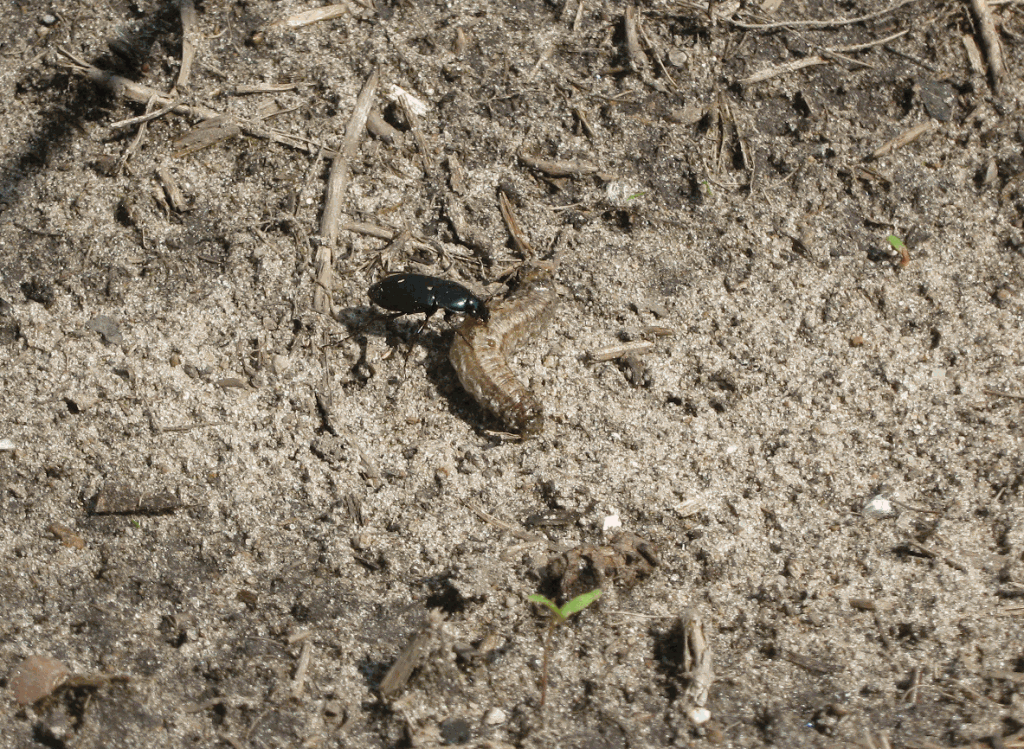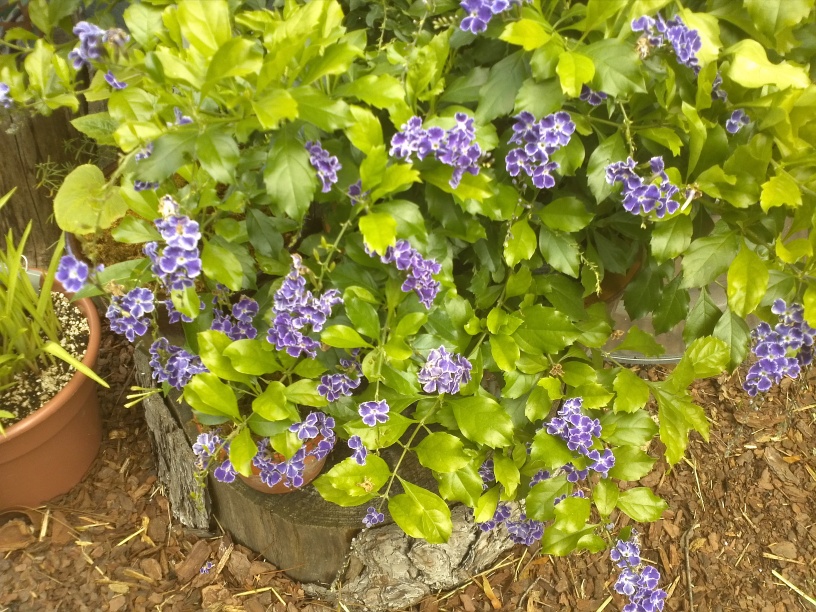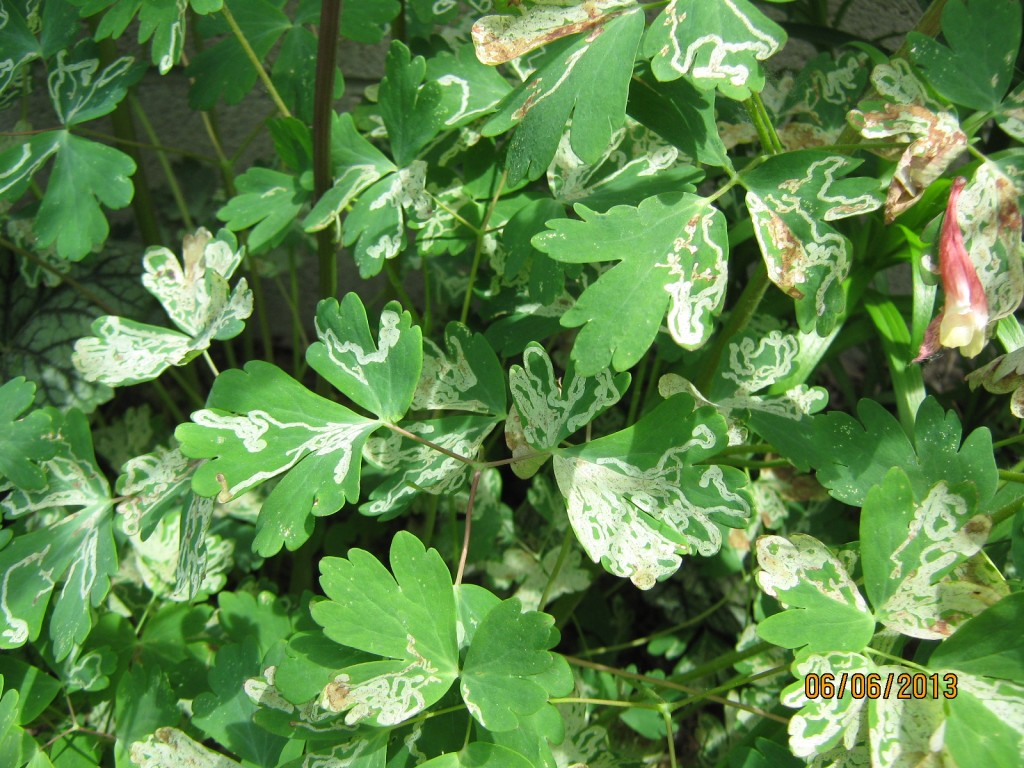Not all predatory insects live above ground like ladybugs and wasps. Many spend much of their lifetime underground.While weeding my onions, I had a chance to see a life and death struggle between a predatory insect and its prey — a cutworm larva.
Normally, cutworms stay underground during the daytime but, my weeding disrupted the soil and brought it to the surface. A species of ground beetle noticed the cutworm too. I stayed very still so not to scare away the beetle. Sure enough, it attacked the cutworm. A major battle was underway that lasted several minutes. You can probably guess who I was rooting for.
The sun was very bright and was taking its toll on the beetle — he finally gave up. The cutworm crawled away as fast as it could to find shelter.
My idea was to pick up the worm and toss it to the chickens as a snack. But, just before the cutworm ducked under some leave litter, a tiny insect — not much more than one-sixteenth of an inch long – flew in out of nowhere. In a split second, it lightly landed on the cutworm then just as quickly flew away.
It was a predatory wasp that stung the worm and laid a clutch of eggs under the cutworm’s skin.
Those wasp eggs will immediately hatch and the wasp larvae will begin feeding on the innards of the cutworm.
I let the worm go so that the wasps could complete their life-cycle.
In the struggle between predator and prey insects, the cutworm may have won the battle but it lost the war.
Bob


